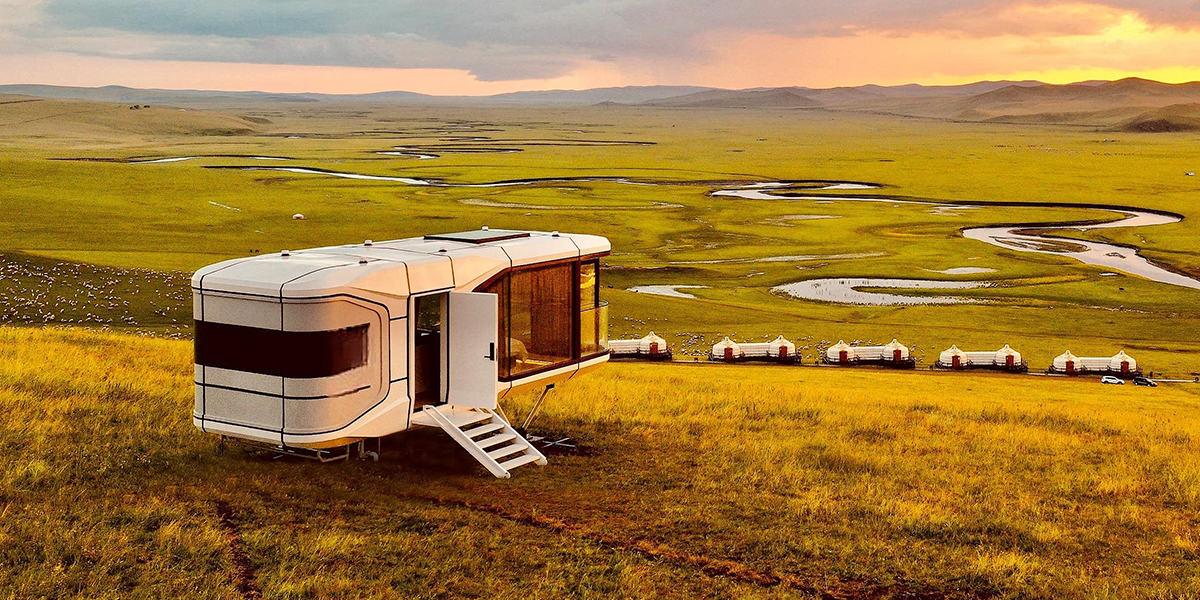
12 Jul What Is a Capsule House and Why Are They Trending
Table of Contents
Imagine living in a home that has everything you need in a small space. A capsule house gives you a tiny area where everything is organized. Every part of the space is used for something important. These capsule units are usually between 100 and 300 square feet. They use smart ideas to make the space comfy and useful. Many people pick capsule houses because they cost less. Monthly costs are from $600 to $800, which is cheaper than normal apartments. The table below shows why more people like these new capsule homes:
Feature | Benefit |
|---|---|
Size | 100-300 sq ft, fits urban environments |
Water Conservation | 30-50% less water usage |
Cost | 30% lower housing costs |
Demographic Preference | 45% of millennials favor smaller homes |
Key Takeaways
Capsule houses are tiny, smart homes that use space well. They are usually between 100 and 500 square feet. They cost less than regular homes. They save money on bills with energy-saving designs and earth-friendly materials. Modular building makes capsule homes fast to build. They are easy to move. You can change them to fit different needs. These homes help the planet by using less water and energy. They also use recycled materials. This makes them a green way to live. Capsule houses are good for singles and couples. They are also good for people who want simple, cheap, and flexible living in busy cities.
Capsule House Definition
What Is a Capsule House
A capsule house is a small home with everything you need. Most capsule homes are between 200 and 500 square feet. Designers try to use every bit of space well. This helps people feel comfortable and keeps things useful. There is not much extra stuff in these homes. Capsule homes are built using modular construction. This means builders can put them together fast. They can also change or add to them if needed. Many capsule homes have modern technology. Some have AI-controlled lights and air systems. These save energy and make the home nicer. Builders often use recycled metals and plastic composites. These materials help the environment.
Aspect | Supporting Evidence (Pro) | Limitation (Con) |
|---|---|---|
Affordability | Starting price around $10,000, significantly cheaper than traditional homes | N/A |
Space | Efficient design maximizes essential living space | Small size may not suit large families |
Eco-Friendliness | Energy-efficient, environmentally friendly materials and design | N/A |
Portability | Easy to relocate, offering flexibility | May require modifications on permanent foundations |
Design | Modern, sleek aesthetic suitable for minimalists | Not suitable for those preferring traditional designs |
Maintenance | Low upkeep due to compact design | Occasional maintenance needed |
Privacy | Good privacy in single-unit setups | Reduced privacy in multi-unit configurations |
Comfort | Comfortable and efficient living in a small footprint | Limited space may reduce comfort for some |
Durability | Durable and suitable for urban environments | Extra insulation needed for extreme weather |
Storage | Smart storage solutions optimize limited space | Limited overall storage capacity |
Capsule homes are a modern, cheap, and green way to live simply and smartly.
Key Features
Capsule homes are special because they use space in clever ways. They have many features that help people live well in a small area.
- Modular construction lets builders put them together quickly and change them easily.
- Furniture like folding beds and sofas saves space.
- Built-in storage, such as hidden closets and under-stair cabinets, uses every spot.
- Open floor plans mix the kitchen, eating, and sitting areas to make the space feel bigger.
- Big windows and good lighting make the rooms feel open and bright.
- Designers use tall spaces and secret storage to keep things tidy.
Tip: Capsule homes often have self-cleaning surfaces, UV cleaners, and soundproof walls for more comfort and safety.
These features make capsule homes popular in cities where space is tight and costly. People get about 20% more usable space than in regular apartments because of these smart ideas.
Materials and Build
Capsule homes use strong, new materials that last long and help the planet. Builders pick materials that can handle tough weather and stay strong.
Average Size (µm) | Shell Thickness (µm) | Elastic Modulus (GPa) | Rupture Stress (MPa) | |
|---|---|---|---|---|
Poly-Urethane (PU) | 50–100 | 1–2 | 0.0029 | 0.026 |
Urea-Formaldehyde (UF) | 65 ± 7 (dry) | 0.175 ± 0.033 | 3.7 ± 0.5 | 0.8 ± 0.3 |
Urea-Formaldehyde (UF) | 187 ± 15 (dry) | 3.6 ± 0.4 | 0.24 ± 0.04 | N/A |
Urea-Formaldehyde (UF) | 213 ± 12 (immersed) | 3.9 ± 0.7 | 0.14 ± 0.02 | N/A |
Poly-Melamine-Formaldehyde (PMF) | 10–150 | 0.2 | 4.66 | N/A |
Phenol-Formaldehyde (PF) | 50–200 | 29.96 | 2.2 ± 0.8 | 68.5 ± 41.6 |
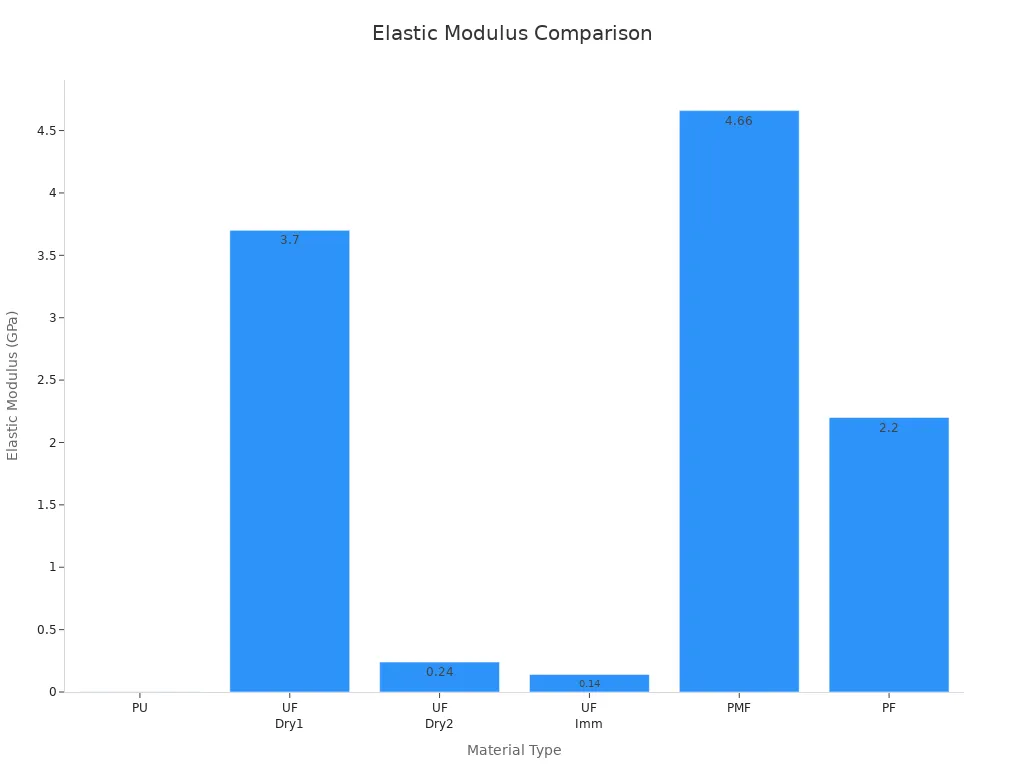
Capsule homes often use urea-formaldehyde, poly-urethane, and phenol-formaldehyde for their shells. These materials are strong and can handle bad weather. Builders also use recycled metals and plastic to make the homes greener. Capsule sizes and shell thicknesses are different, which changes how strong they are. Most capsules can survive rough mixing and cement, so they last a long time. Tests show that materials like PLA and PS tubes stay strong even in harsh chemicals. This makes capsule homes a good choice for both cities and the countryside.
How Capsule Homes Work
Design and Layout
Capsule homes use smart design to make small spaces feel bigger. Designers arrange furniture and storage in clever ways. Many capsule homes have open layouts. The kitchen, living, and sleeping areas share one space. Built-in shelves, foldable beds, and hidden cabinets save space. Tall ceilings and big windows let in more light and air. These features help make capsule homes comfy and useful. People can move around easily, even in a small area.
Portability and Setup
Capsule homes are easy to move and set up. Builders use modular construction, so each part fits together fast. Many capsule homes are light and some have wheels. This makes moving them simple. People use capsule homes as guest houses, offices, or pop-up shops. In places like the Za’atari Refugee Camp in Jordan, capsule homes give quick and strong shelter. Event spaces, like the Kameha Grand Hotel in Germany, use capsule units for fast setups. The global market for capsule hotels is growing quickly. More people want homes that are easy to move and change.
- Capsule homes can be put together and taken apart fast.
- Modular and prefabricated methods make setup easy.
- Their small size lets them fit in many places.
Note: Capsule homes are good for emergencies and short-term needs because they can be set up quickly.
Technology and Sustainability
Capsule homes use new technology to save energy and help the planet. Many have smart systems to control lights, temperature, and air. These systems save energy and lower bills. Builders use recycled and eco-friendly materials. Capsule homes use less water and power than regular houses. Solar panels and rainwater systems are common. These choices make capsule homes good for people who care about nature. Living efficiently and saving energy are important in every design.
Capsule House Trends
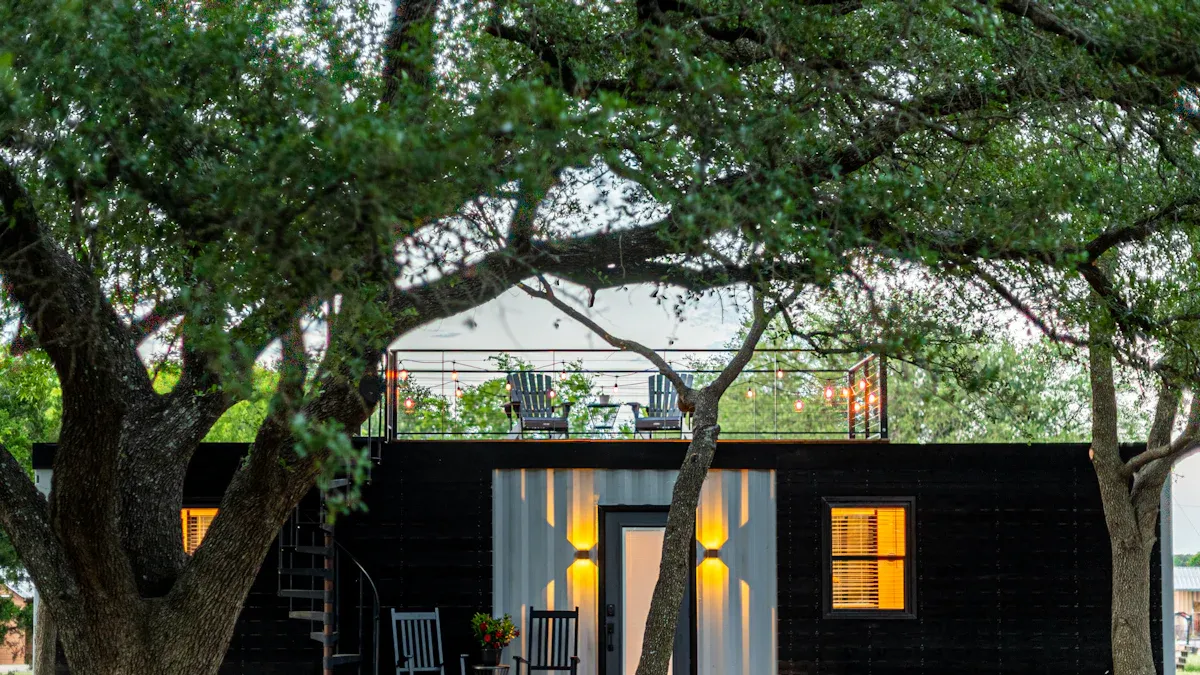
Why Capsule Homes Are Popular
Many people pick capsule homes to fix city problems. These homes use modular designs and strong metals like steel or aluminum. They do not need normal foundations, so builders set them up fast. Capsule homes are flexible. People can stack them or move them to new spots. They can also be offices or shops, not just homes.
Prefabricated building saves money and time.
Waterproofing and insulation help these homes last longer.
Fast building and cool looks bring in buyers.
Less waste and lower costs help more people buy them.
Capsule homes are good for people who want cheap, custom, and green living. Many young adults, students, and workers choose these homes for their small size and smart space use.
Market and Lifestyle Shifts
People’s lives are changing. More people want simple lives with less stuff. The global minimalist market was $10 billion in 2024. Experts think it will grow to $25 billion by 2032. City millennials in North America like small, useful designs. In Europe, people want green materials and clean looks. In Asia-Pacific, young people pick simple, useful homes.
More people in cities means more need for small homes.
Social media and branding make people want simple living.
Online shopping and custom options make buying capsule homes easy.
Many people feel less stress and more order in small homes.
Capsule homes match these trends. They give smart, green, and flexible living for people who like tiny homes.
Sustainability Factors
Capsule homes help the planet. Builders use factory-made parts, which makes less waste. Good insulation and special windows save energy. Many capsule homes have solar panels for clean power. These homes use land well and can be set up fast, which helps cities grow in a green way.
Note: Capsule homes help the earth by using fewer things and making less trash.
Capsule homes show that small homes can help both people and the planet.
Benefits and Drawbacks
 Advantages
Advantages
Capsule houses have many good points for people who want simple living. They cost much less than regular homes. Prices go from $20,000 to $100,000, based on size. Small ones cost $20,000 to $40,000. Medium ones are $40,000 to $80,000. Large ones can be up to $100,000. Building and utility costs are lower, so people save money over time.
Advantage Category | Data-Driven Insight |
|---|---|
Cost | Lower prices and long-term savings on utilities and maintenance |
Space | Compact design (50–500 sq. ft.) maximizes every inch, perfect for crowded cities |
Environmental Benefits | Uses fewer resources, energy-efficient systems, and eco-friendly materials |
Capsule houses use space in smart ways. Designers make sure everything fits in small areas. People can set up these homes fast, sometimes in three days. This is helpful in busy cities where space is tight.
Many capsule houses have good insulation and save energy. These features help use less power and lower pollution. Builders pick eco-friendly materials, which is good for nature. Resorts with capsule houses spend less and get their money back faster. They can also change quickly when the market changes, so they are a smart choice for business.
Tip: Capsule houses give a steady and flexible place to live or work, which is great when things change fast.
Disadvantages
Capsule houses have some downsides too. The small size may not work for big families or people who want more room. Storage is hard, even with smart ideas. Some people might feel crowded or miss having different rooms.
Privacy is less, especially in places with many units. Noise can move easily in small spaces. Bad weather can be a problem. Some capsule houses need better insulation or upgrades to stay comfy in very hot or cold weather.
People who like classic homes or big yards may not like the modern style and small space. In some places, local rules or zoning laws make it hard to put a capsule house. Buyers should check these rules before they decide.
Note: Think about your life and what you need before picking a capsule house.
Capsule House for Sale and Suitability
 Who Should Consider
Who Should Consider
Capsule houses work for many people. Singles and couples without kids often want a capsule house for sale. People who like simple living also look for these homes. Many young buyers want to save energy and use less space. People who care about the earth like these homes too. They want to use fewer things and live in a green way.
A table below shows who might pick a capsule house for sale:
Demographic/Lifestyle Indicator | Statistic/Description |
|---|---|
Average age of first-time homebuyer | |
Median household income (first-time buyers) | $95,900 |
Percentage married couples (first-time buyers) | 64% |
Percentage couples without dependents | 40% |
Employment status of first-time buyers | 94% employed full-time |
Acceptance of modular/small homes | 67.42% believe they will become mainstream |
People with full-time jobs often look for a capsule house for sale. Many buyers live in small households or want a home office. Capsule houses help them save money and live simply.
Tip: Capsule houses are good for blue-collar workers, young homesteaders, and anyone who wants a smart, low-cost home.
Cost and Customization
The price of capsule house models changes with size, design, and features. A basic capsule house for sale starts at $20,000. Fancy models with more tech and nice finishes can cost over $100,000. Most capsule houses cost less than regular homes, which often start at $200,000.
Aspect | Capsule Houses | Traditional Homes | Container Houses | Modular Homes |
|---|---|---|---|---|
Cost Range | $20,000 (basic) to over $100,000 (luxury) | Typically over $200,000 | Varies, generally higher due to robustness | Varies, often more expensive due to size and flexibility |
Customization Options | Designs, finishes, layouts; focus on minimalism and efficiency | High customization possible | High customizability; can combine units for larger spaces | High flexibility in design and layout, multiple stories possible |
Construction Time | Weeks (modular assembly) | Several months to over a year | Moderate, depends on container modification | Weeks to months depending on complexity |
Buyers should pick a capsule house for sale that fits their needs. Many companies let buyers choose the layout, color, and materials. Some let buyers add solar panels or smart home systems. When looking for a capsule house for sale, buyers should check the materials, insulation, and warranty. They should also ask about delivery and setup costs.
Note: Always compare capsule house prices and see what is included before you buy.
Capsule houses are a smart and cheap way to live. People pick them to save space and money. They are easy to set up and good for the planet. Students, travelers, and young workers like these homes. These homes fit what they need. Experts think the market will get much bigger by 2030. It could be worth $3.98 billion then. The industry is growing by about 10% each year. New tech and easy booking will help more people try this way of living. Capsule houses make it simple to live small and help the earth.
FAQ
What is the average lifespan of a capsule house?
Most capsule houses last about 20 to 30 years if you take care of them. Builders use strong things like steel and composite panels. If you keep up with repairs, your home will stay safe and nice.
Can capsule houses handle extreme weather?
Capsule houses usually have insulation and weatherproofing. Many can stand up to heavy rain, wind, and snow. Some need more insulation for places that get very hot or cold.
Are capsule houses legal everywhere?
Local laws and zoning rules decide if you can have a capsule house. Some cities let people put them in backyards or use them as main homes. You should always check the rules in your area before you buy one.
How much time does it take to set up a capsule house?
Most capsule houses come already made in a factory. It usually takes a few days to set them up. Some only need one day to put together. Getting the land ready and hooking up water and power might take longer.
Can buyers customize the interior of a capsule house?
Many companies let you pick the layout, color, and finishes. Buyers can add things like solar panels or smart systems. Customizing helps each person make their space special.




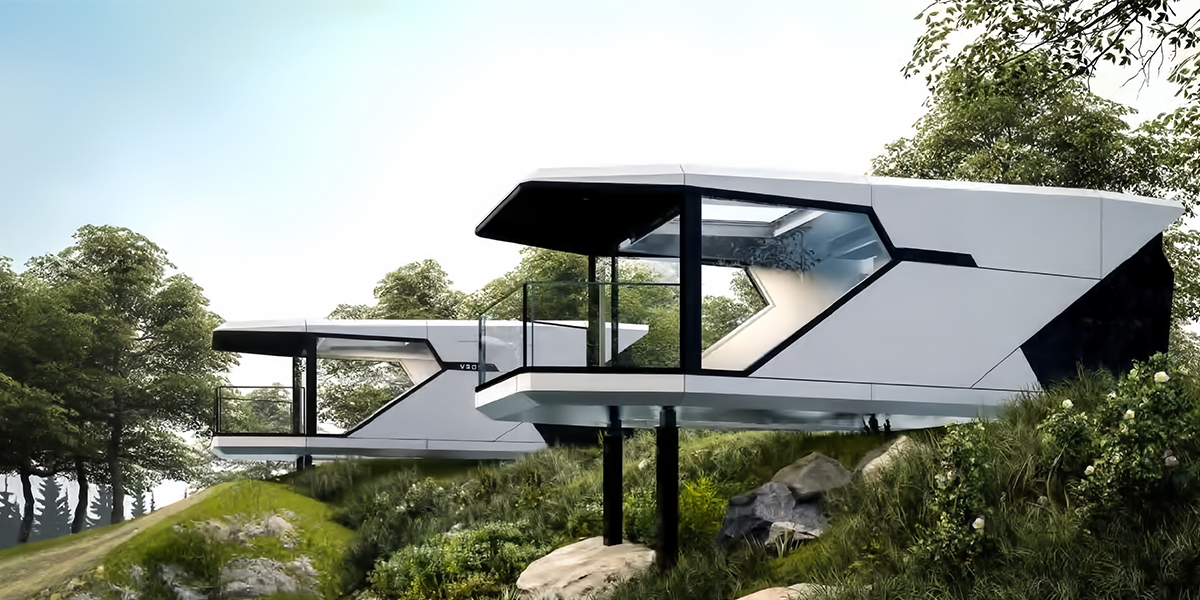 Advantages
Advantages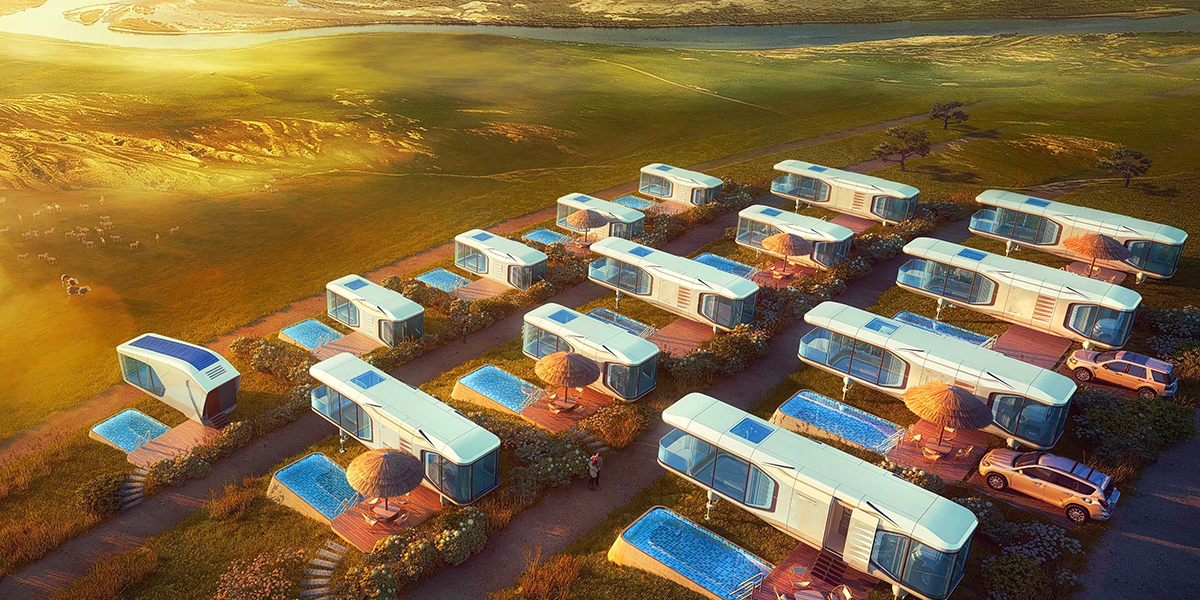 Who Should Consider
Who Should Consider